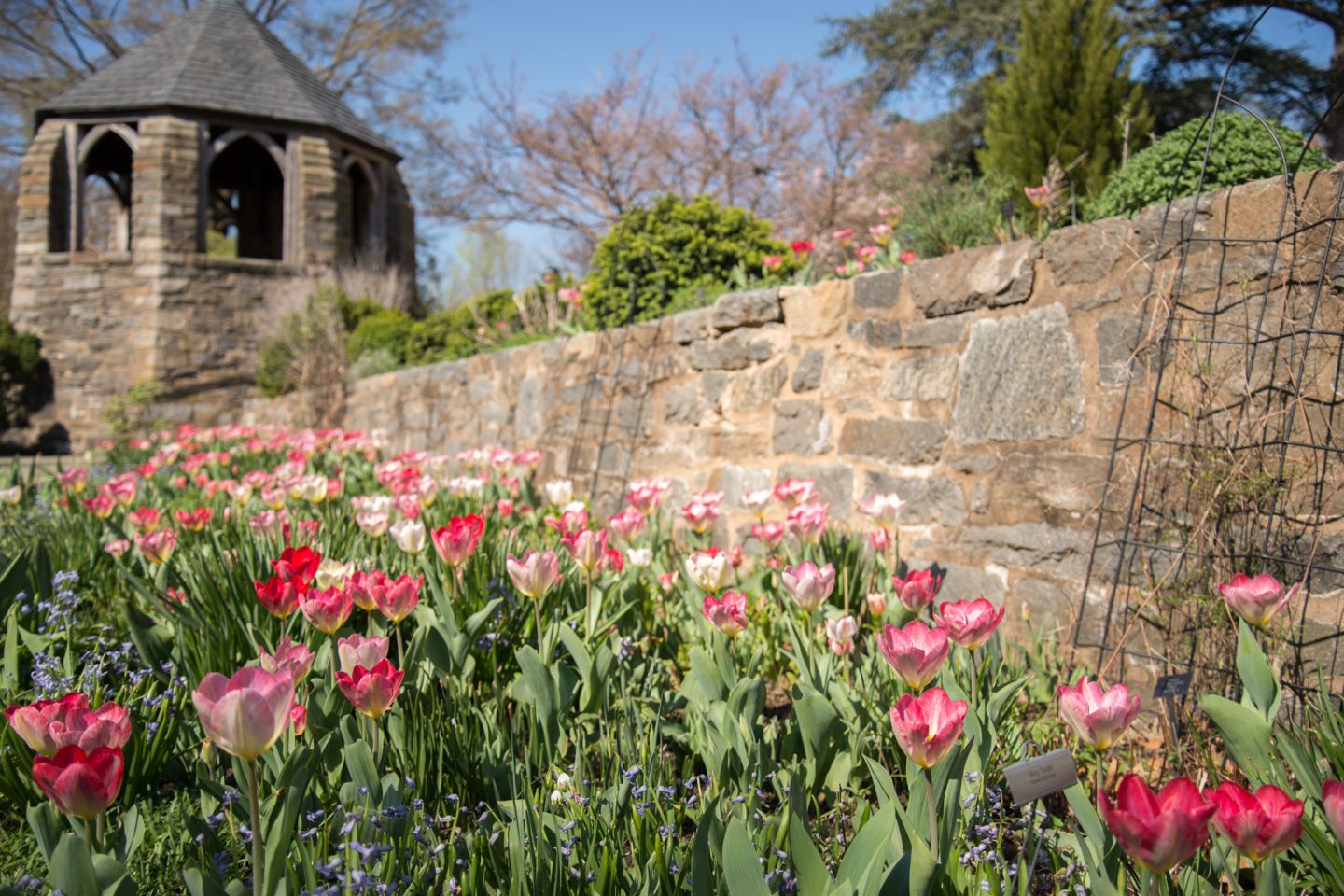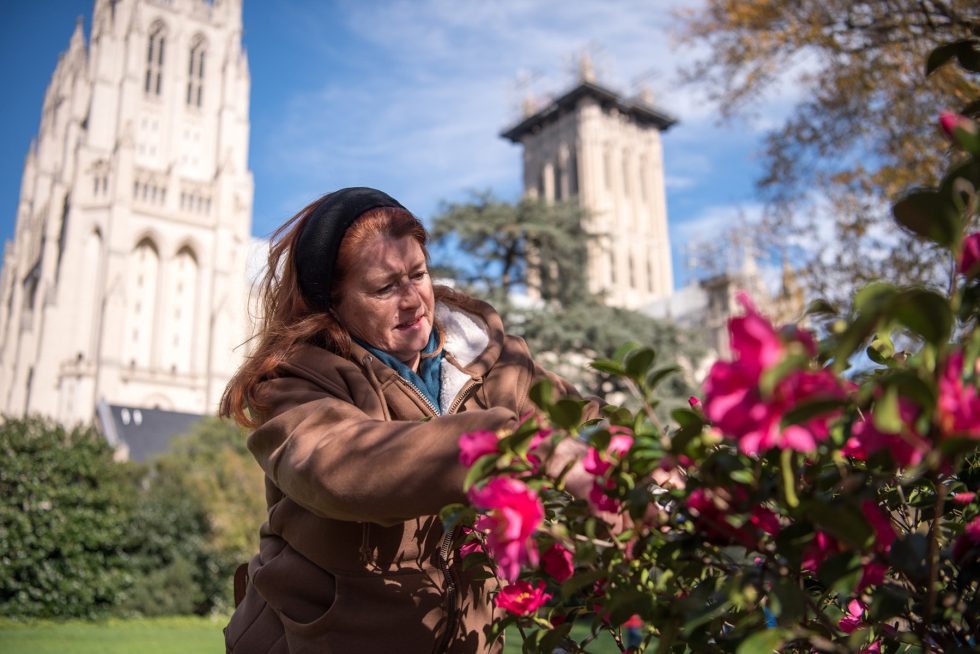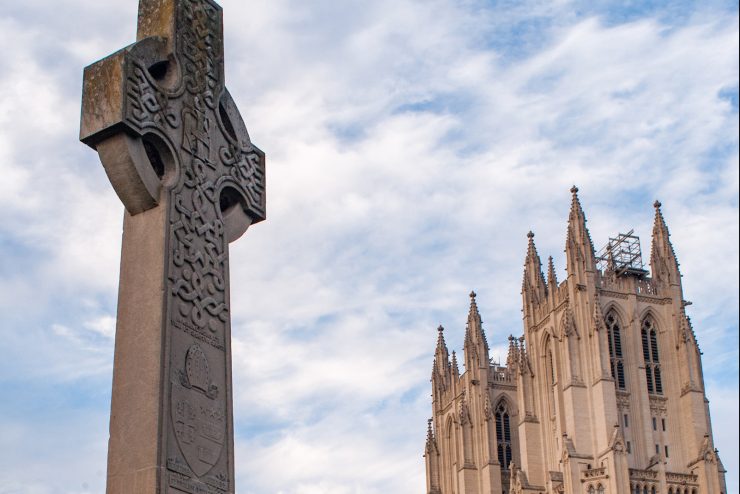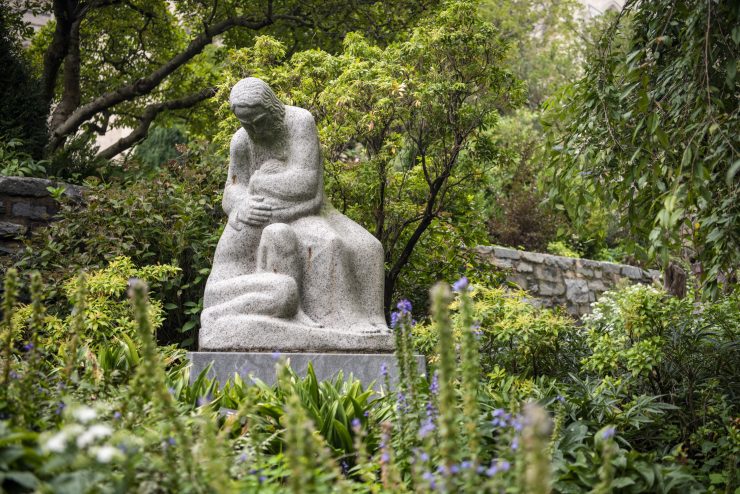
Gardens & Grounds
The Cathedral Close, the 59 acres surrounding the Cathedral, provide a beautiful sanctuary year-round.
The grounds consist of cultivated gardens, including the Bishop’s Garden; the Olmsted Woods, an oak and beech forest; manicured lawns; a prayer path; and the landscaped grounds and athletic fields of the Cathedral schools.
All Hallows Guild was founded in 1916 to maintain and beautify the Cathedral’s gardens and grounds. The Guild, working closely with the Cathedral’s horticultural staff, preserves and beautifies this historic landscape. The Guild spearheads fundraising and educational events throughout the year. Explore more of the detailed history of the Cathedral’s gardens and grounds.
Visiting our Gardens & Grounds
We welcome visitors to enjoy the peaceful quiet that surrounds the Cathedral. The grounds are open daily dawn to dusk. While visiting, we ask that you:
- Clean up after yourself, your family and your pets.
- Dispose of garbage in trash cans. Place cigarette butts in appropriate containers.
- Keep your pets leashed in accordance with D.C. law.
- Follow parking guidelines or park in the garage.
- Leave glass containers and alcohol at home.
- Stay on sidewalks and paths.
- Obtain a photo permit if you are using the Cathedral gardens and grounds for a professional shoot.
Notable Features
Bishop's Garden
Frederick Law Olmsted, Jr.'s concept for the Bishop’s Garden on south road was primarily a private garden, accessible only from the Bishop’s house. Under later landscape designers, such as Florence Brown Bratenahl, it grew into the public space we know today. Inspired by medieval walled gardens the terraced landscape features sculpture nestled amid plants of historical interest, native plants and plants of the Bible and Christian legends.
Cathedral Garth and All Souls Memorial Garden
Between the Cathedral and the Administration Building, the Cathedral Garth offers a place of respite, with the abstract fountain designed by George Tsutakawa. The All Souls Memorial Garden, located in the grassy area in the back of the garth, The All Souls Memorial Garden provides in-ground burial for cremated remains. Please be respectful when visiting the memorial garden.
Peace Cross
Located between St. Alban’s Church and St. Alban’s School, the 20’ tall Peace Cross is a Celtic cross formed from two pieces of limestone. It was erected to commemorate the end of the Spanish American War.
Prodigal Son
This contemporary sculpture by Heinz Warneke illustrates the parable of the Prodigal Son. The sculpture, which had been previously exhibited in the Whitney Museum and the Museum of Modern Art in New York, is sheltered by an old weeping cherry tree in an intimate setting.
The Shadow House
The eight-sided garden gazebo was designed by Cathedral architect Philip Frohman. There are eight views of the garden through arched windows. A small bronze statue of baby Pan, sculpted by Edith Parsons, was relocated to a pedestal at the entrance to the Shadow House in 2017 in memory of Rowan LeCompte, Cathedral stained glass artist.
Olmsted Woods
The Olmsted Woods are the last vestige of an extensive oak and beech forest on Mount St. Alban. The woods include a stone footpath, a contemplative circle, native wildflowers and shrubs and is home to a host of migratory birds. All Hallows Guild is exploring options for removing or replacing the footbridge, which was closed following damage caused by a fallen tree.
Amphitheater
The first amphitheater hosted outdoor services during the early days of Cathedral construction. Thanks to restoration, this beautiful outdoor space of curved stone walls and grass walkways is once again a setting for picnics, worship, contemplation and performance.







